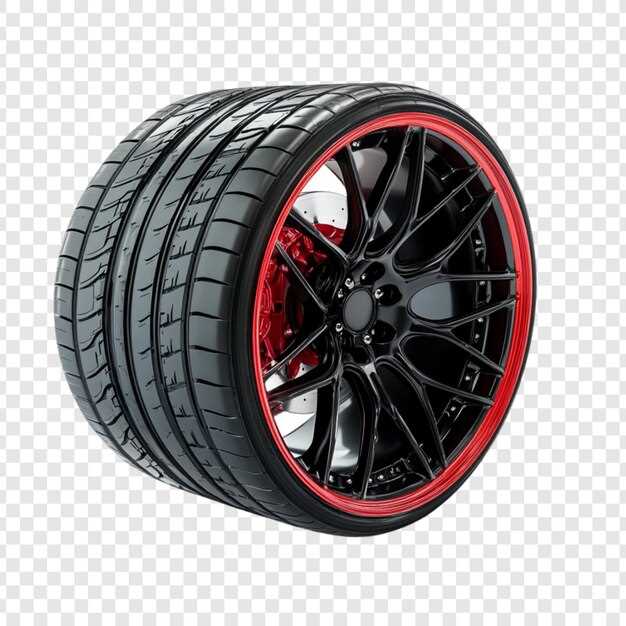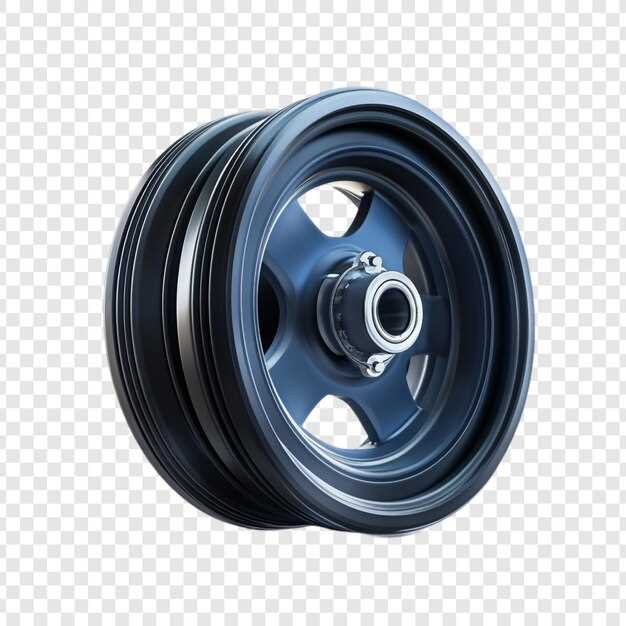The Best Lightweight Rims for Performance Cars


When it comes to optimizing the performance of a vehicle, one of the most critical components to consider is the rims. Lightweight rims not only improve aesthetics but also significantly enhance the car’s acceleration, handling, and braking capabilities. The right set of rims can transform a standard performance car into a true powerhouse, amplifying its driving experience and responsiveness on the road.
Choosing the right lightweight rims involves more than just selecting a stylish design; it requires understanding material composition, weight distribution, and the overall impact on the vehicle’s dynamics. Advances in technology have led to the production of rims that minimize rotational mass while maintaining robust structural integrity, which is essential for high-performance driving conditions.
In this article, we will explore some of the best lightweight rims currently available on the market. We’ll cover various brands and models, focusing on their unique features, performance benefits, and compatibility with different vehicles. Whether you’re an amateur enthusiast or a seasoned racer, finding the ideal lightweight rims can elevate your car’s performance to new heights.
Why Choose Lightweight Rims for Performance Cars?
Lightweight rims are essential for performance cars due to their significant impact on overall vehicle dynamics. By reducing unsprung weight, lightweight rims enhance acceleration, braking, and handling, allowing for quicker response times and improved cornering capabilities. The decreased mass also facilitates a more efficient transfer of power from the engine to the wheels, promoting better traction and stability during acceleration.
Furthermore, lighter rims contribute to improved fuel efficiency. With less weight to move, the engine expends less energy during operation, resulting in lower fuel consumption. This can be particularly advantageous for drivers seeking to balance performance with practicality.
Another critical advantage of lightweight rims is their ability to enhance braking performance. Reduced rotational mass allows brake components to operate more effectively, decreasing stopping distances and providing a more responsive feel during braking maneuvers. This increased control is vital, especially in high-performance driving scenarios where precision is crucial.
In addition to performance benefits, lightweight rims also provide aesthetic appeal. Many lightweight options feature modern designs that can complement the overall look of a performance car, making it not only faster but also visually striking.
Durability is also a consideration; advancements in materials such as forged aluminum and magnesium alloys provide strength without significant weight penalties. This ensures that lightweight rims can withstand the rigors of high-speed driving, maintaining their integrity over time.
Ultimately, choosing lightweight rims for performance cars yields a comprehensive range of benefits, enhancing not just speed but also efficiency, safety, and style. Opting for these specialized components is a strategic choice for those looking to maximize their vehicle’s potential on the road or track.
Top Materials Used in Lightweight Rim Manufacturing
Lightweight rims are pivotal in enhancing the performance of cars, and the choice of material significantly influences their overall strength, weight, and durability. Several materials are commonly utilized in manufacturing high-performance rims, each offering unique advantages.
Aluminum alloys are among the most popular materials for lightweight rims due to their excellent strength-to-weight ratio and corrosion resistance. The typical alloy used in this context is 6061, which combines magnesium and silicon, providing enhanced strength without significantly increasing weight. Aluminum rims not only contribute to performance gains but also allow for intricate designs and improved aesthetic appeal.
Carbon fiber has gained traction in high-performance applications, particularly for racing and luxury vehicles. This composite material offers remarkable stiffness and a very low density, enabling manufacturers to produce rims that are significantly lighter than their aluminum counterparts. The manufacturing process involves layering carbon fibers and resin, resulting in a product with exceptional strength while minimizing weight.
Magnesium alloys represent another advanced option in rim manufacturing. These rims are lighter than aluminum and offer good strength properties. They are primarily used in motorsport applications where every ounce counts, but their higher cost and susceptibility to corrosion limit their use in general consumer vehicles. However, when used effectively, magnesium rims can optimize performance and handling.
Forged rims are manufactured using processes that compress and shape a single piece of metal, usually aluminum or magnesium. This method imparts superior strength and lightweight properties compared to cast rims. Forged rims are often found in high-end performance vehicles and offer enhanced durability, making them resistant to bending and cracking during intense driving situations.
Finally, stainless steel is occasionally utilized for certain applications due to its robustness and resistance to corrosion. While heavier than aluminum or magnesium, its durability makes it a viable option for vehicles that prioritize longevity over weight. However, for performance-focused applications, stainless steel is generally not the preferred choice.
In conclusion, the choice of material in lightweight rim manufacturing plays a crucial role in optimizing vehicle performance. While aluminum alloys remain a staple, advancements in carbon fiber and magnesium alloys continue to push the boundaries of what’s possible in high-performance automotive design.
How to Select the Right Size for Your Performance Vehicle

Choosing the correct rim size for your performance vehicle is crucial for achieving optimal handling, traction, and acceleration. Here are the key factors to consider:
-
Understand Your Vehicle’s Specifications:
Start by checking the manufacturer’s specifications for rim sizes. This information can typically be found in the owner’s manual or on a sticker inside the driver’s side door. Ensure that any rims you consider comply with these specifications to maintain safety and performance.
-
Determine Your Driving Style:
Your chosen driving style influences the optimal rim size. For track racing or spirited driving on twisty roads, wider rims can enhance grip and cornering stability. Conversely, if you prioritize comfort or daily driving, a slightly smaller rim may provide a smoother ride.
-
Consider Tire Compatibility:
The rim size impacts the type of tires you can fit. Check the recommended tire sizes for your chosen rims. Wider tires can improve cornering and traction but may create additional road noise or reduced ride comfort.
-
Evaluate Weight and Performance:
Lightweight rims can enhance acceleration and braking performance. Analyze the weight difference between various rim options and consider how that weight savings will impact your vehicle’s overall performance.
-
Assess Aesthetic Preferences:
The appearance of your vehicle plays a role in rim selection. Larger rims can give a sportier look, but ensure that aesthetics do not compromise functionality or performance.
After considering these factors, it is essential to consult professionals or experienced enthusiasts when making a final decision. Proper rim size can significantly impact overall vehicle performance, safety, and appearance.
Performance Benefits of Lightweight Rims in Racing Environments
Lightweight rims play a crucial role in enhancing vehicle performance, particularly in racing environments. The reduced mass of these rims directly results in improved acceleration and braking, allowing drivers to achieve faster lap times. By decreasing the unsprung weight, lightweight rims reduce the energy required to move the wheels, enhancing overall responsiveness.
Additionally, lightweight rims contribute to better handling characteristics. A lower weight on each wheel allows suspension systems to react more effectively to changes in traction and terrain. This leads to improved cornering stability, as the vehicle can maintain grip with less effort. Drivers often report a more direct connection to the road, providing greater confidence during high-speed maneuvers.
An important aspect of lightweight rims is their impact on rotational inertia. Lighter rims allow for quicker changes in direction, benefiting race cars during agility tests and tight corners. This decrease in rotational inertia enhances steering response, enabling faster transitions between braking and acceleration.
Furthermore, lightweight rims can help in reducing tire wear. Less mass on the wheels can result in reduced strain on tires, leading to more consistent performance over race durations. Maintaining optimal tire conditions leads to better traction and consistent lap times, a crucial factor in competitive racing.
In summary, the advantages of lightweight rims in racing environments are clear. Enhanced acceleration, improved handling, reduced rotational inertia, and lower tire wear collectively contribute to a more competitive performance. As racing continues to evolve, the adoption of lightweight rims remains a fundamental consideration for any serious racer looking to maximize their vehicle’s potential.
Leading Brands Offering Lightweight Rims in 2023
In the competitive world of automotive performance, lightweight rims play a crucial role in enhancing vehicle dynamics. In 2023, several brands stand out for their innovation, quality, and commitment to performance.
One prominent brand is OZ Racing, renowned for its intricate designs and superior engineering. OZ Racing’s lightweight rims are known for their remarkable strength-to-weight ratio, making them a preferred choice for both street and track applications. Their involvement in motorsports ensures that each rim is optimized for high performance.
HRE Wheels is another leader in the lightweight rim market. HRE utilizes advanced manufacturing techniques, such as forging and lightweight alloys, to produce rims that not only reduce weight but also improve rigidity. This combination allows for better handling and acceleration, making their products highly sought after among car enthusiasts.
Forgeline specializes in custom-made lightweight wheels, offering a vast array of designs tailored for various performance needs. Their wheels are crafted using a unique forging process, resulting in exceptionally lightweight yet durable options ideal for racing and high-performance vehicles.
Rotiform is known for its stylish and lightweight rims that are popular among tuners and car aficionados. Rotiform combines aesthetics with performance, offering lightweight options without compromising on design. Their rims are not only functional but also serve as a statement piece for any performance car.
Lastly, Enkei rounds out the list with a strong portfolio of lightweight wheels that balance performance and affordability. Enkei’s unique technologies, such as MAT (Most Advanced Technology), allow for the production of lightweight rims that are robust and versatile, appealing to a wide range of drivers.
These brands excel in producing lightweight rims that cater to performance-oriented drivers in 2023, ensuring better agility, acceleration, and overall driving experience.
Installation Tips for Lightweight Rims to Maximize Benefits
Installing lightweight rims can significantly enhance your car’s performance, but proper installation is essential to truly harness their benefits. Here are essential tips to consider during the installation process:
| Tip | Description |
|---|---|
| 1. Choose the Right Size | Select rims that match your vehicle’s specifications for diameter and width. An improper size can lead to handling issues and compromised performance. |
| 2. Inspect Wheel Hubs | Ensure the wheel hubs are clean and free of debris. Any dirt or corrosion can affect the rim’s fitment and lead to malfunction. |
| 3. Use Proper Torque Settings | Refer to your vehicle’s manual for torque specifications. Using a torque wrench to tighten lug nuts to the recommended settings prevents loosening and ensures safety. |
| 4. Balance the Wheels | Proper balancing is crucial for optimal performance and stability. Unbalanced wheels can cause vibrations and uneven tire wear, undermining the benefits of lightweight rims. |
| 5. Check Alignment | After installing lightweight rims, have your vehicle’s alignment checked. Proper alignment maximizes performance and tire longevity. |
| 6. Monitor Tire Pressure | Regularly check tire pressure, as lightweight rims might perform differently under varying pressures. Keeping them inflated to the correct level enhances handling and fuel efficiency. |
| 7. Inspect Regularly | Conduct frequent inspections for signs of wear or damage. Early detection allows for timely replacements or repairs, maintaining your car’s performance. |
By following these tips, you can ensure that your lightweight rims are installed correctly and that their performance benefits are fully realized. Prioritizing these steps can lead to a safer and more enjoyable driving experience.
